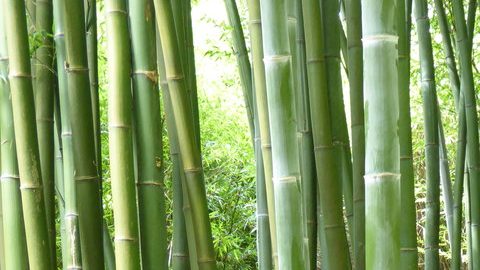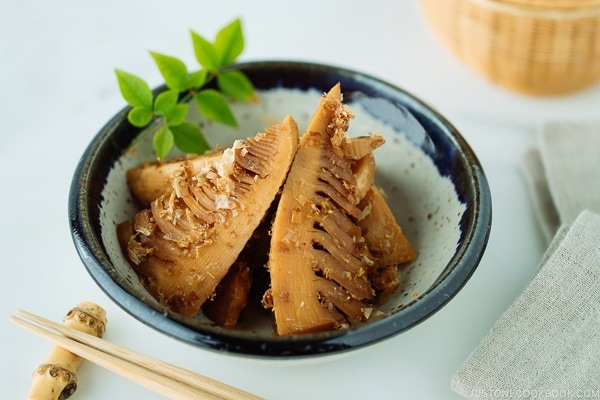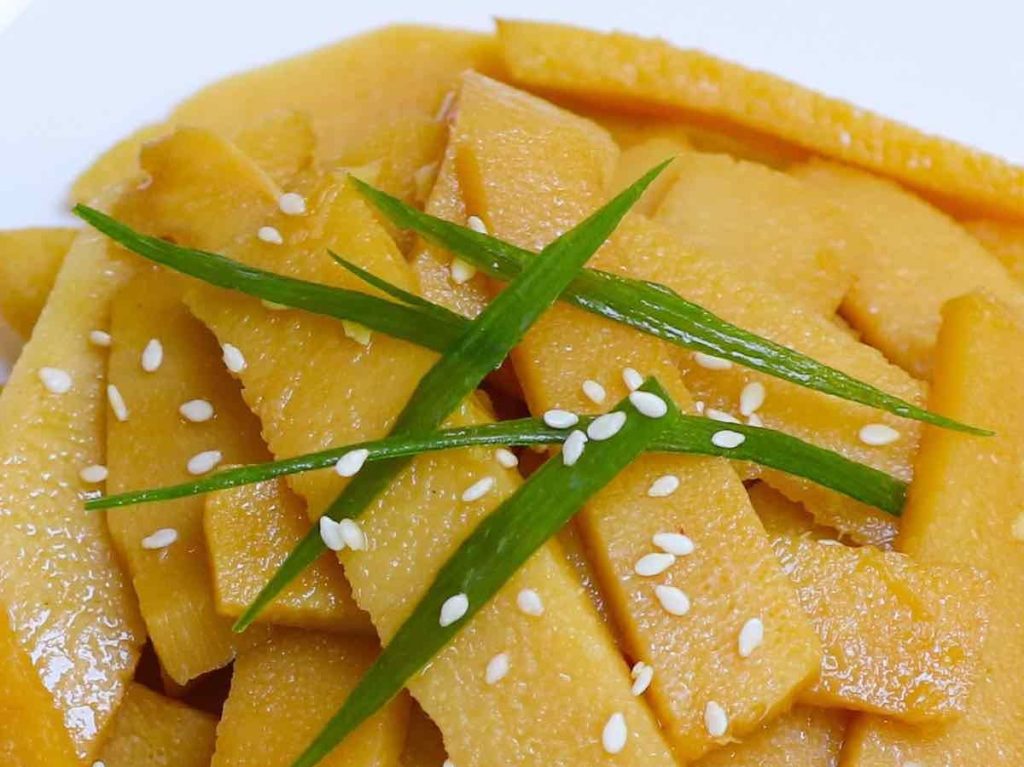We have entered the micro-season of “Bamboo Shoots Appear”. This is the third micro-season of the mini-season of First Summer.
Each mini-season contains three micro-seasons. The micro-seasons contained within First Summer are:
- The First Frog Calls (May 05 – May 09)
- The Earthworms Rise (May 10 – May 14)
- Bamboo Shoots Appear (May 15 – May 20)
These seasons were established in 1685 by Japanese astronomer Shibukawa Shunkai and are specific to Japan. However, just because the calendar focuses on Japan doesn’t mean it isn’t applicable to others. No matter where you live you can use these seasons as a starting point for your personal exploration of the world around you.
What is Bamboo?
The term Bamboo refers to various perennial evergreen flowering plants in the Bambusoideae subfamily of the larger Poaceae family of grasses. These tall tree-like grasses are some of the fastest-growing plants in the world. Some species can grow as much as 12 inches (30 cm) in a day.(1)
Bamboo plants are taxonomically organized into tribes and subtribes before being divided into genera and species. The tribes of bamboo are called Olyreae, Bambuseae, and Arundinarieae.
The Tribes.
Olyreae are herbaceous bamboo and are the only ones without woody stems. They are primarily found in tropical rainforests of the Americas including the Amazon. This tribe contains three subtribes and 21 genera.(3)
Bambuseae are tropical woody bamboo plants that also reside in the Neotropics of the Americas and the Paleotropics of Africa and Asia. This tribe contains 11 subtribes and 73 genera.(4)
Arundinarieae are temperate climate woody bamboo found in southeastern North America, Subsaharan Africa, South Asia, and East Asia. This tribe has one subtribe and 31 genera.(5)
Within these tribes, there are 15 different subtribes, 115 different genera, and 1,400 different species of bamboo covering the globe.

What are bamboo shoots?
The term bamboo shoot refers to the culm of a young bamboo plant. A culm is the above-ground stalk of grasses and sedges.
Bamboo shoots are edible. When they are harvested in the first couple of weeks of growth they are described as being, “roughly as soft as an apple. The texture is actually very similar to a water chestnut.”(6) However, you can’t eat bamboo shoots straight out of the ground. The young shoots contain a toxin that can produce cyanide in the gut.(2) Therefore, you must treat them before eating.
There are a few ways that you can prepare bamboo shoots to make them safe for consumption. The most common are boiling and pickling. However, you can also ferment them or soak them in a saltwater bath for about a week.(6)
A Few Bamboo Dishes
Simmered Bamboo Shoots
Simmered Bamboo Shoots, also known as Takenoko no Tosani, is a fairly easy dish to make that allows the bamboo shoots to absorb all the rich flavor of the Tosani. The term “Tosani” describes the process of adding dried bonito flakes, or Katsuobushi, to a simmered soy sauce-based dish.(7) Dried bonito flakes are dried, fermented, and smoked fish filets.
Check out this recipe for Simmered Bamboo Shoots from JustOneCookbook.com

Seasoned Bamboo Shoots
Seasoned Bamboo Shoots, or Menma, is a condiment made from bamboo shoots. To make menma, the bamboo shoots are first dried and then fermented. Menma can be eaten as either a snack or a topping for ramen. Menma has a crunchy texture and is full of flavor. This flavor comes from the seasoning added during the fermentation process.
Check out this recipe for Menma from IzzyCooking.com.

Haiku about Bamboo Shoots
Bamboo Shoots are a spring kigo, or seasonal word, for haiku. The following haiku by Kobayashi Issa highlights the spring season.
bamboo shoots, baby sparrows play together Gently! -Issa
bamboo shoots-- the nightingale brings her children -Issa
Yosa Buson provides us with this next bamboo shoot haiku.
A monk’s nephew visits the temple — bamboo shoots -Buson
Finally, we have a haiku from Matsuo Basho.
bush warbler - in a grove of bamboo shoots singing its old age –Basho
If you are interested in learning more about the different techniques used in haiku there is a great article called “Haiku Techniques” by Jane Reichhold. In this article, Reichhold explores 23 different techniques used in haiku.
Resources:
- “Bamboo”; Britannica.com
- “Bamboo”; Wikipedia
- “Olyreae”; Wikipedia
- “Bambuseae”; Wikipedia
- “Arundinarieae”; Wikipedia
- Fred Hornaday; “Growing Bamboo for Food”: BambuBatu.com
- Namiko Chen; “Simmered Bamboo Shoots”; JustOneCookbook
- Menma (Pickled Bamboo for Ramen Topping): IzzyCooking
Issa’s haiku were retrieved from David G. Lanoue’s site, Haiku of Kobayashi Issa.
Visit the Naturalist Weekly bookstore and browse our curated lists of books of poetry and haiku. Or pick up a gift card that can be used throughout the store.

So beautiful Bamboo plants and inspiring explanations 🌷🙏♥️👍🏻🌷
Hi Thattamma, So nice to hear from you and I am glad that you enjoyed this post! Thanks again for the support!
You are most welcome dear friend 🌷🙏♥️😊greetings 👏🌸
I really like this essay. I have such an affinity and deep respect for Asian culture, so learning more about bamboo was delightful. I loved the haiku by the Big Three (Basho, Issa and Buson). Bamboo (and its shoots) is so iconic and draws my mind at once to Asia. I’ve written several poems with references to bamboo. As always, I enjoyed Issa”s playfulness in his haiku, and Basho’s contrast between the young shoots and the old warbler was startling and beautiful. Buson’s comparison between the young nephew and the bamboo shoots is an ideal metaphor for youth. This was such a pleasure to read, Mark. Thanks for the in-depth research and, as always, for presenting some haiku from the great masters to serve as a coda for the article. Nicely done, good sir! 🙂
Hi Mike, I am glad that enjoyed this one. I also really enjoyed the haiku for this post. The difference between Basho, Buson, and Issa’s take on bamboo is pretty. Thanks for the comment and the continued support. Talk soon,